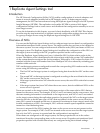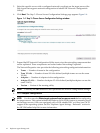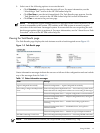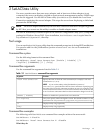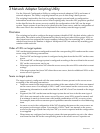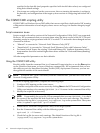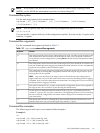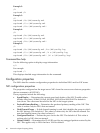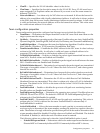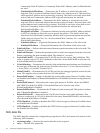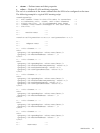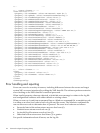
3 Network Adapter Scripting Utility
Use the Network Configuration Utility to configure network adapters (NICs) and teams of
network adapters. The utility’s scripting feature lets you do this using a batch process.
The scripting functionality also lets you configure target systems based on configuration
information saved from a source server. When scripting runs, it uses the NIC properties specified
in the data file from the source server to modify the configuration of the NICs on the target
system. Target systems do not have to be identical to the source server, and the configuration of
the source server does not have to be duplicated in its entirety onto the target system.
Overview
The scripting tool used to configure the target systems identified NICs by their relative order in
the system. The relative order is determined by the slot and port order in the system. NICs on
the system board are assigned the lowest numbers, followed by the remaining NICs, which are
ordered from lowest slot number to highest. Multiported NICs are ordered by ascending port
number within each slot.
Order of NICs on target systems
NICs on the target system are configured to match the corresponding NIC numbers on the source
server using the following conventions:
• The first NIC on the target system is configured using data from the first NIC on the source
server.
• The second NIC on the target system is configured according to the saved data for the second
NIC on the source server, and so on.
• If the target system has more NICs than the source server, the extra NICs retain their current
settings.
• If the target system has fewer NICs than the source server, data for additional NICs on the
source server is ignored.
Teams on target systems
The target system is configured with the same number of teams present on the source server
according to the following conventions:
• Teams are created on the target system consisting of the same relative NICs that were teamed
on the source server. For example, if NICs 3 and 5 were teamed on the source server, then
that teaming information is saved in the data file, and NICs 3 and 5 are teamed on the target
system
• In general, the NICs on the team on the target system do not have to be the same type of
NICs that were teamed on the source server. However, some NICs cannot be teamed, and
if an attempt is made to form a team with invalid combinations of NICs, an error occurs.
For example, teams with no common speed capabilities cannot be teamed on a load balancing
team.
• An error occurs in the configuration if the NICs forming the team on the source server are
not present on the target system. For example, if NICs 3 and 5 are teamed on the source
server but the target system has only four NICs, an error is reported and the configuration
is not applied.
• When teams are configured on the target system, the team properties are set to the values
read from the data file for the corresponding team on the source server. Properties not
Overview 17



